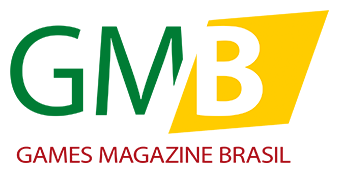

A few months ago, the Jockey Club of São Paulo made a statement that revealed that horse races in Brazil are moving about 1 billion reais (US$245m) per year. These data were provided by the Luiz de Queiroz High School of Agriculture, and of this total, at least 600 million (US$145m) come from bets. However, jockey clubs all over Brazil say that races are not enough to maintain the machinery that means developing the horse and paying the jockeys. So they must look for new ways to generate income, trying to turn the horse tracks into spaces for all people and not just as a place for players.
The idea that racetracks become a recreation space outside the betting circuit can mean a palliative to generate a higher income for the sector. For example, the Jockey Club of São Paulo organizes events where around 10,000 people gather for the weekends, with activities for kids, horseback riding and culinary spaces. Obviously, the main business is turf and betting, but the industry tries to make the track a room for the whole family and, if you are interested, you can place a bet for just two reais (US$0.50).
The point is that if this type of event is enough for the industry to grow in Brazil or need other measures, especially from the government to become a truly competitive industry. While Brazil has the fourth largest herd of horses in the world with about 5.8 million heads behind the United States, Mexico and China, it does not appear in the list of the top ten purebred producing countries of race horses (Thoroughbred), which is the nobility of the turf industry.
Argentina, with 2 million fewer horses, is the fourth in this list and produces three times as many racehorses as Brazil. The secret lies in policies aimed at promoting race production and a fund created from the lease of slot machines installed in the province of Buenos Aires, a region that produces 95 percent of purebred horses in the country.
The studies carried out in Brazil indicate that the perspective of growth of this business depends on the capacity of the creators to organize themselves to produce quality animals, with a vision much more placed in the international market. Recently, the Confederation of Agriculture of Brazil created the National Commission of Horses with the objective of gathering associations of breeders from all over the country and trying to put value on this productive segment. In Brazil, there are now more than 20 associations of purebred breeders whose potential may change from their present position.
Although the turnover of the activity that compromises the Brazilian horse is around 7,500 million reais (US$1.8bn) per year, it involves approximately 500,000 people directly and indirectly, and this helps breeders become professionals in breeding horses, many of these revenues come from the sale of horses for slaughter and consumption in countries such as France, China and Eastern Europe. According to data from the United Nations Food and Agriculture Organization (FAO), Brazil provides up to 15 percent of the total number of horse heads intended for human consumption.
International turf experts could give an idea of how to improve the equestrian industry and not just rely on the slaughter and sale of animals for consumption, but not on policies that encourage the breeding of quality specimens. In Canada, the government has created a financing agreement for the US$ 105 million racehorse sector to support racetracks that are in deficit and generate new jobs; the United States, the world's leading thoroughbred producer, in most of the 32 states where racetracks exist, governments offer rewards and incentives for breeding, and also obtain percentages of gambling and slot machines.
These circumstances mean that there are great prizes that reache the 16 million dollars. In Ireland, state support through tax breaks and the exception of income taxes has made the country the third largest purebred producer, being today the world's largest exporter of these animals. Thanks to Irish stallions, China is developing its equestrian industry.
But it is important to note that the growth of horse breeding and the turf industry seems to be closely linked to the world of gambling. Most countries where horseback riding thrives and races are notably improved, not only are they supported by governments, but also participation in gaming revenues that generates industry development and hundreds of jobs in that sector and the directly connected ones. Brazilian equestrian exploration, by its number, history and potential, could even become a thriving industry and compete for a position on the world podium of purebred horses.
The development of the activity is so widely accepted that even a national senator from Rio Grande do Sul, Laiser Martins, who opposes the legalization of gambling, asked that if the bill was passed, they could extend bets for all equestrian sports and that is not an exclusive issue for Turf.
FABIAN BATAGLIA
Fabián Bataglia. Journalist specializing in the gambling industry; graduated in Social Communication at the CAECE University of Buenos Aires and professor of Journalism and Communication at this university. Specialist in information production and digital communication; currently works in Diario del Juego of Buenos Aires, Argentina.